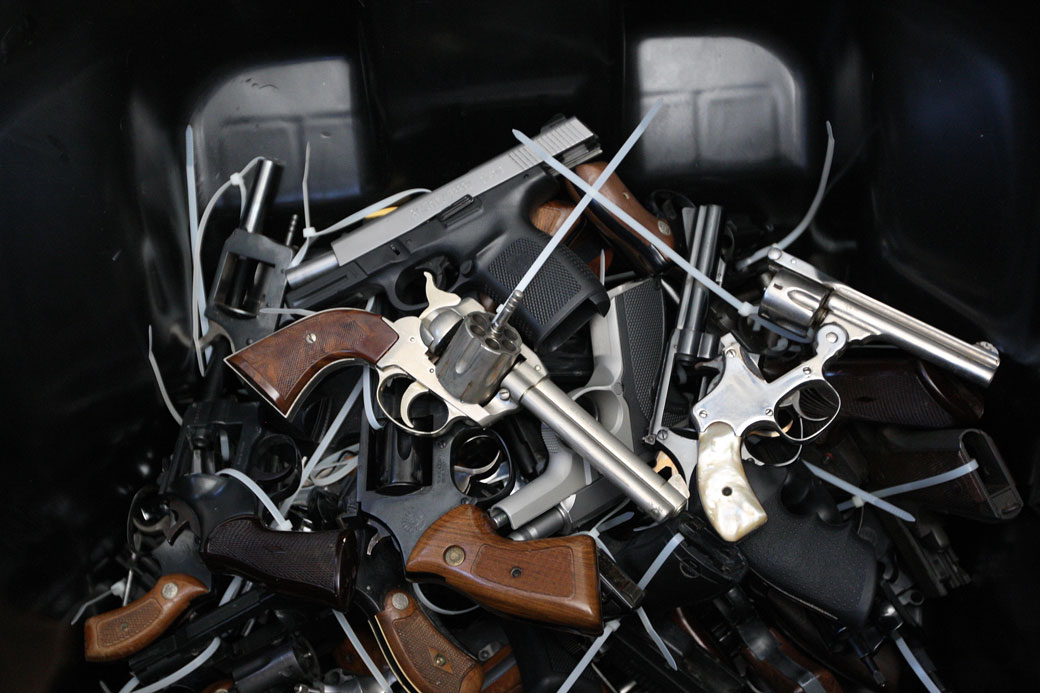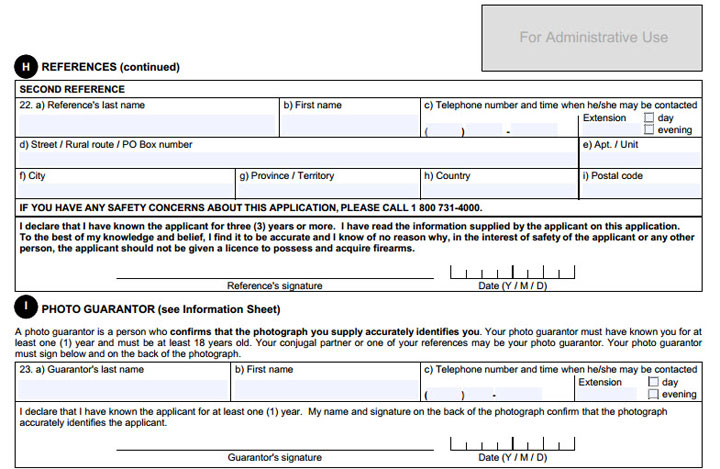TORONTO – In a country not known for its gun crimes, many have been left wondering how someone a friend described as “not stable” could have obtained multiple guns in the first place, shooting to death three RCMP officers and injuring to two more in Moncton, N.B. this week.

The guns used in the crimes are believed to be an M-305 semi-automatic rifle – a knock-off of the M-14 – and a Mossberg shotgun. Both guns are legal in Canada and are “non-restricted,” like mainstream rifles and shotguns used by hunters and farmers.
But in order to have guns in Canada, you need a gun licence.
READ MORE: National Firearms Association statement draws sharp response on Twitter
The application for the possession and acquisition licence is fairly easy. You fill out a form with your personal history, safety training certificate, references, and photo guarantor. Send off your fee ($60 or $80, depending on the type of licence), and wait.
Restricted, Non-restricted, and Prohibited
There are three classifications of guns in Canada: non-restricted, restricted, and prohibited. You need a separate licence for all classes.
A non-restricted firearm is “an ordinary rifle, shotgun or combination gun that is not described below as being restricted or prohibited,” according to RCMP’s Application for a Possession and Acquisition Licence under the Firearms Act. Most civilian gun-owners in Canada – including, it appears, Justin Bourque – have non-restricted firearms.
A restricted firearm is:
- a handgun that is not prohibited;
- a semi-automatic, centre-fire rifle or shotgun with a
barrel length less than 470 mm (18.5 inches) that is not
prohibited; - a rifle or shotgun that can fire when its overall length is
reduced by folding, telescoping or some other means to
less than 660 mm (26 inches); - any firearm prescribed as restricted (including some
long guns).
A prohibited firearm is:
- a handgun with a barrel length of 105 mm (4.1 inches) or
less; - a handgun designed or adapted to discharge 25 or 32
calibre ammunition; - a rifle or shotgun that has been altered to make it less than
660 mm (26 inches) in overall length; - a rifle or shotgun that has been altered to make the barrel
length less than 457 mm (18 inches) where the overall
firearm length is 660 mm (26 inches) or more; - an automatic firearm and a converted automatic firearm;
- any firearm prescribed as prohibited.
To obtain a non-restricted firearm, a person must also complete the Canadian Firearms Safety Course and pass the test. You also have the option of challenging and passing the test without taking the course.
If someone wants a restricted firearm, you must take and pass that test as well as the Canadian Restricted Firearms Safety Course.
In 1993, then-Prime Minister Jean Chretien’s government introduced the long-gun registry, which required the registration of all non-restricted firearms. It faced intense debate: Many gun-owners resented having to register their firearms, arguing that law-abiding citizens were being needlessly targeted. Gun control advocates – and police – have argued that registry can reduce crime and help officers trace guns to their owners.
READ MORE: How a changing arms industry is bringing incoherence to Canada’s gun control system
In 2012, the federal Conservatives dropped the registry and deleted the list (though Quebec challenged that). Owners of non-restricted guns no longer need to register their guns.
What does this mean for gun owners selling their guns?
It means they can sell them freely and are under no obligation to ask the buyer for proof of a gun licence. In fact, Section 23 of the Firearms Act reads “…a person may transfer a firearm that is neither a prohibited firearm nor a restricted firearm, if at the time of the transfer … (b) the transferor has no reason to believe that the transferee is not authorized to acquire and possess that kind of firearm.”
READ MORE: For lost and stolen guns, long-gun registry was an owner’s best friend
Though they aren’t legally obliged to ask for proof of a gun licence, several private gun dealers reached by phone told Global News they ask anyone buying a gun to show their licence.
It’s unclear whether the RCMP checks the references of applicants for licenses. The RCMP did not respond to questions from Global News by deadline Friday evening.
In 2010, about 1.8 million Canadians had some form of firearms licence. About 72,000 of them were in New Brunswick. Before the long-gun registry was deleted in the fall of 2012, there were more than 8 million firearms of all types registered in Canada.
With files from Patrick Cain




Comments